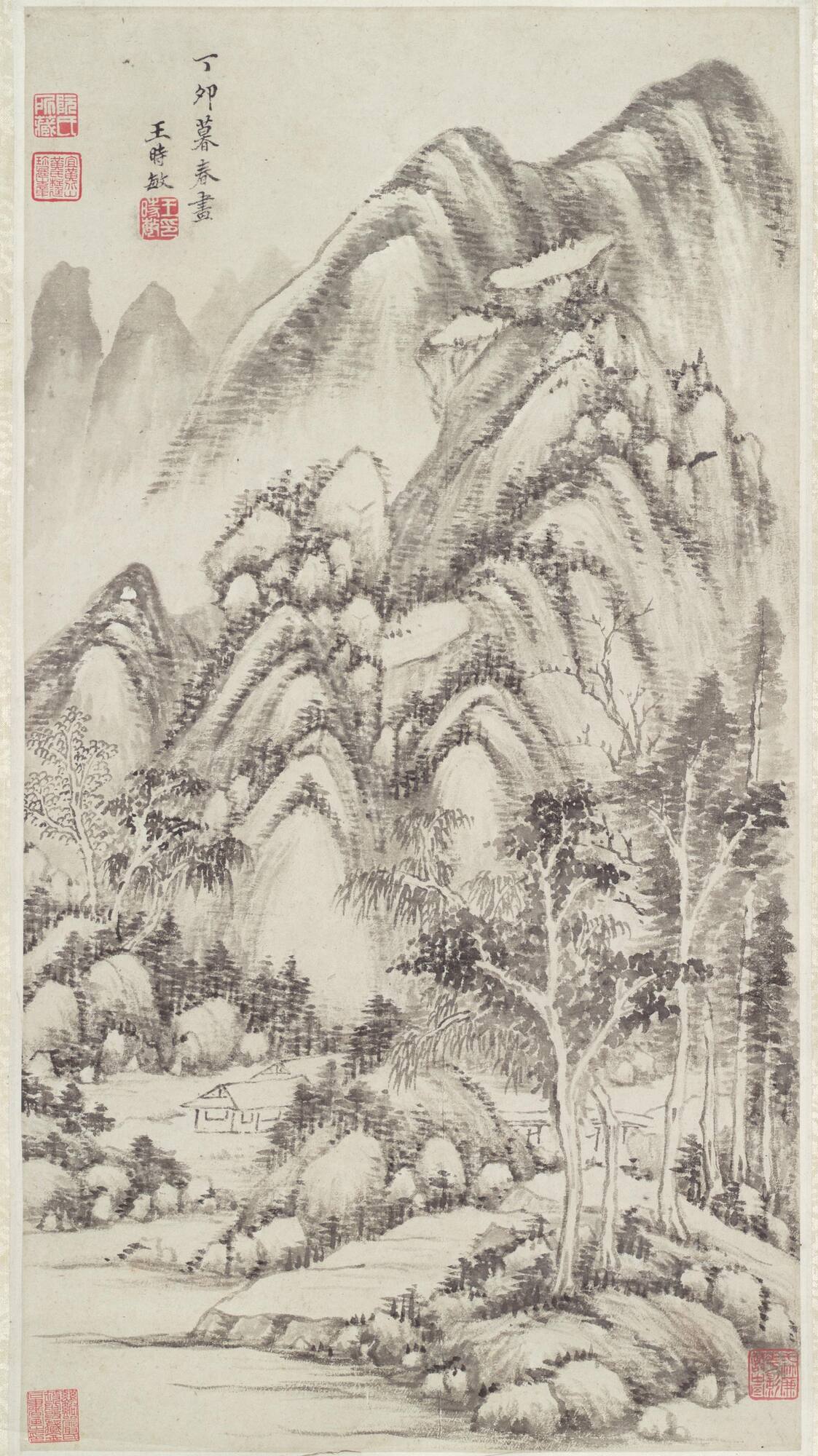
Object Details
Artist
Wang Shimin
Date
Ming dynasty (1368-1644)
Medium
Hanging scroll: ink on paper
Dimensions
23 1/8 x 12 1/2 in. (58.8 x 31.8 cm)
Credit Line
Gift of Professor Ray J. Wu, in honor of Daisy Yen Wu, and in memory of Hsien Wu
Object
Number
84.105.001
Wang Shimin was a member of the group of Chinese painters known as the Four Wangs, along with Wang J(…)
Wang Shimin was a member of the group of Chinese painters known as the Four Wangs, along with Wang Jian (1598–1677), Wang Hui (1632–1717), and Wang Yuanqi, (1642–1715), who represented the so-called “orthodox school” of painting in the Ming and early Qing periods. This school was based upon the dicta laid down by Dong Qichang (1555–1636) and “orthodox” in the Confucian sense of continuing traditional modes that, in fact, only referred to literati painting tradition. The Four Wangs achieved creative expression according to their own individual interest, but they were also bound by their respect for traditional forms and traditional standards of excellence. Wang Shimin spent his whole life imitating Huang Gongwang, one of the Four Masters of Late Yuan, to the point that Wang Shimin was unable to depart from Huang Gongwang’s painting style. His composition often shows this formulaic approach, featuring a riverbank in the foreground with a few tall trees, and tall mountains in the background. Such iconic landscapes evoked the eremitic mentality of Chinese artists for whom nature served as an environment for contemplation and rejuvenation. (“Tradition, Transmission, and Transformation in East Asian Art,” curated by Cornell PhD student Yuhua Ding under the supervision of Ellen Avril and presented at the Johnson Museum January 23-June 12, 2016)












